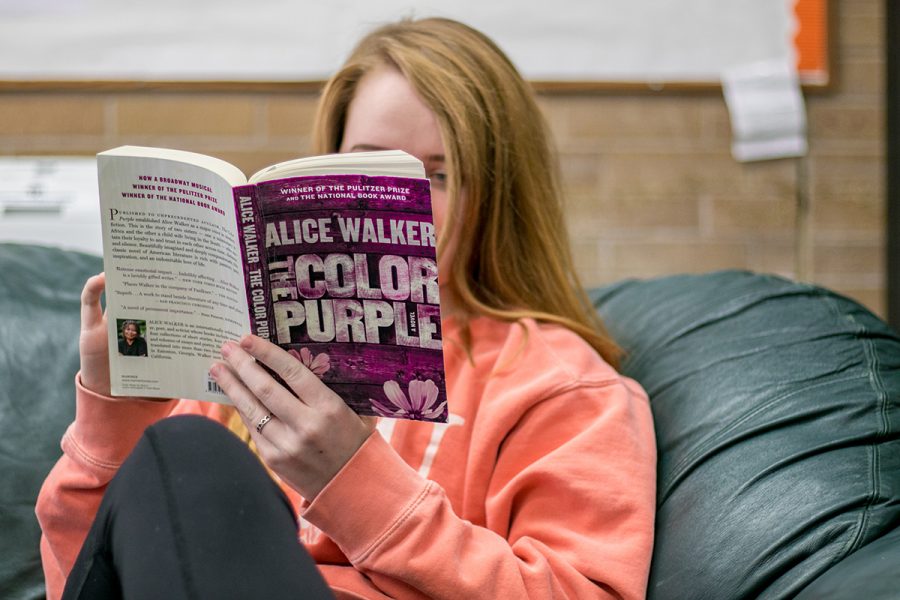Reading literature from a new perspective
English III AP students are required to read ‘The Color Purple’
January 31, 2018
First you are thinking, “Do we really have to read another book?” You read the first six pages, and you are appalled. You read the pages again just to make sure you are not mistaken, but no — you weren’t. Within these first few pages, “The Color Purple” will shock readers with its blunt, in-your-face content and its realistic portrayal of life of an African-American woman in the 1930s.
This is the fourth year English teacher Anita Badgett has required her students to read the novel since she began teaching AP English III in 2014. She continues to include the book in her curriculum despite its controversial nature.
“I think it is vital for students to read works by a variety of authors, and I strive to present texts from many points of view. ‘The Color Purple’ is one of the most renowned works by not only an African-American, but also by a female,” Badgett said. “Very few of our titles in AP English are written from a female voice, and it is important for students to be exposed to great works by both men and women. Another reason ‘The Color Purple’ is used in AP English III is that it has appeared on the AP English Language test many times.”
She hopes for students to gain more from it than just its educational value. The life lessons embedded within the novel are also very important to her.
“The most important thing I hope students take away from this reading is the power of redemption, forgiveness and friendship,” Badgett said. “‘The Color Purple’ is about the moral, ethical and emotional development of the main character, Celie. Through her quest for redemption, she learns the values of friendship and how important the strong women surrounding her are in helping her find redemption and forgiveness so that she can move on and become a strong, independent woman.”
I think I’ll gain more perspective as far as how racism wasn’t just between different races, but within a single race. It definitely makes me consider how we treat each other around school.
— Tizrah Bailey
Because of Badgett’s push for students to read the challenging novel, another teacher, Samuel Tirrito, has begun to require it be read this year for the first .
“This is my first year to teach AP English, so this is my first year to have it on my list,” Tirrito said. “The fact that this is an epistolary novel instead of another straightforward, traditional prose work means that it can serve as a break for students and show them a different way to tell a story that they may not have been exposed to yet.”
It is admittedly a difficult book for some students to comprehend. However, that might be the very reason they need to read it; understanding these harsh events and analyzing them will hopefully prepare them for harder reads and life challenges.
“Mrs. Badgett assigning this book is probably what everyone needs, because in most cases of racial issues, the books we talk about are about how one [race] treats another. So many are oblivious to the cruelties that people faced from their own kind,” junior Tirzah Bailey said. “I think I’ll gain more perspective as far as how racism wasn’t just between different races, but within a single race. It definitely makes me consider how we treat each other around school.”





















